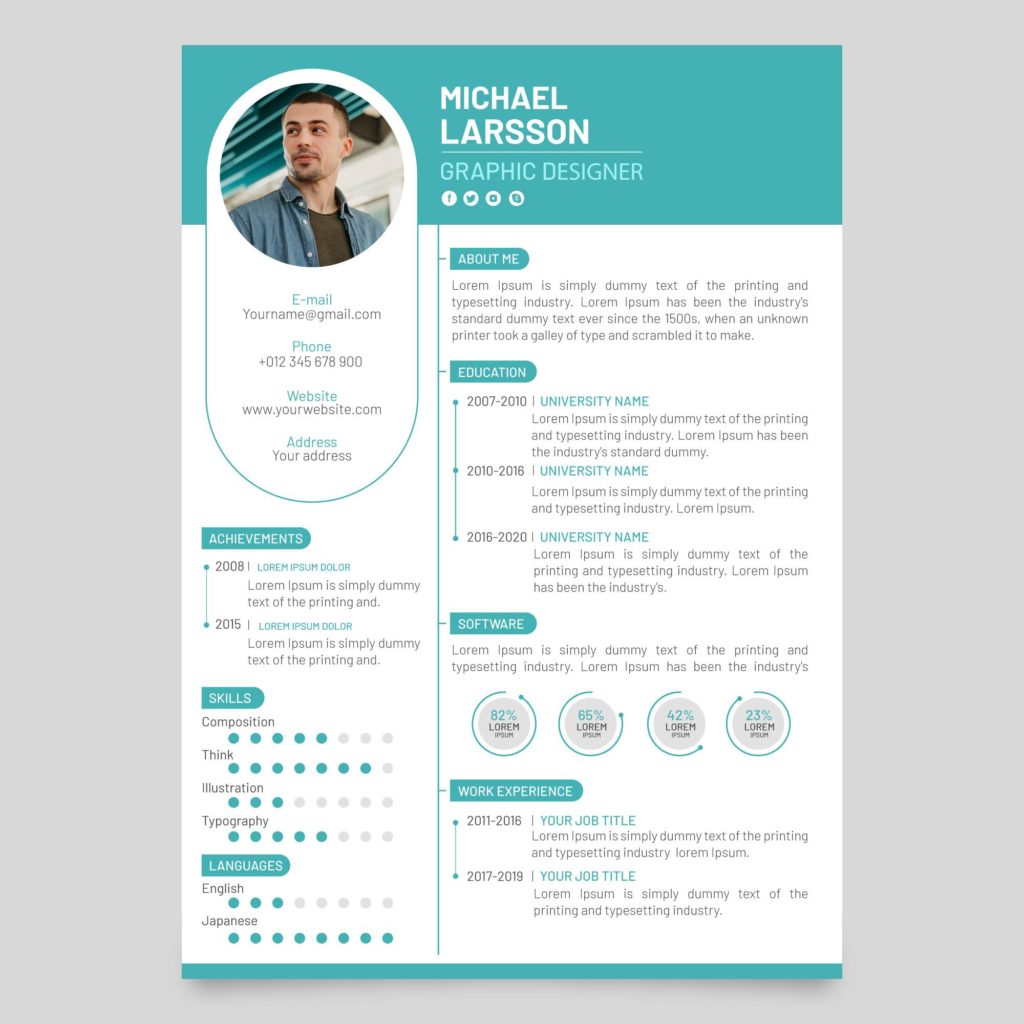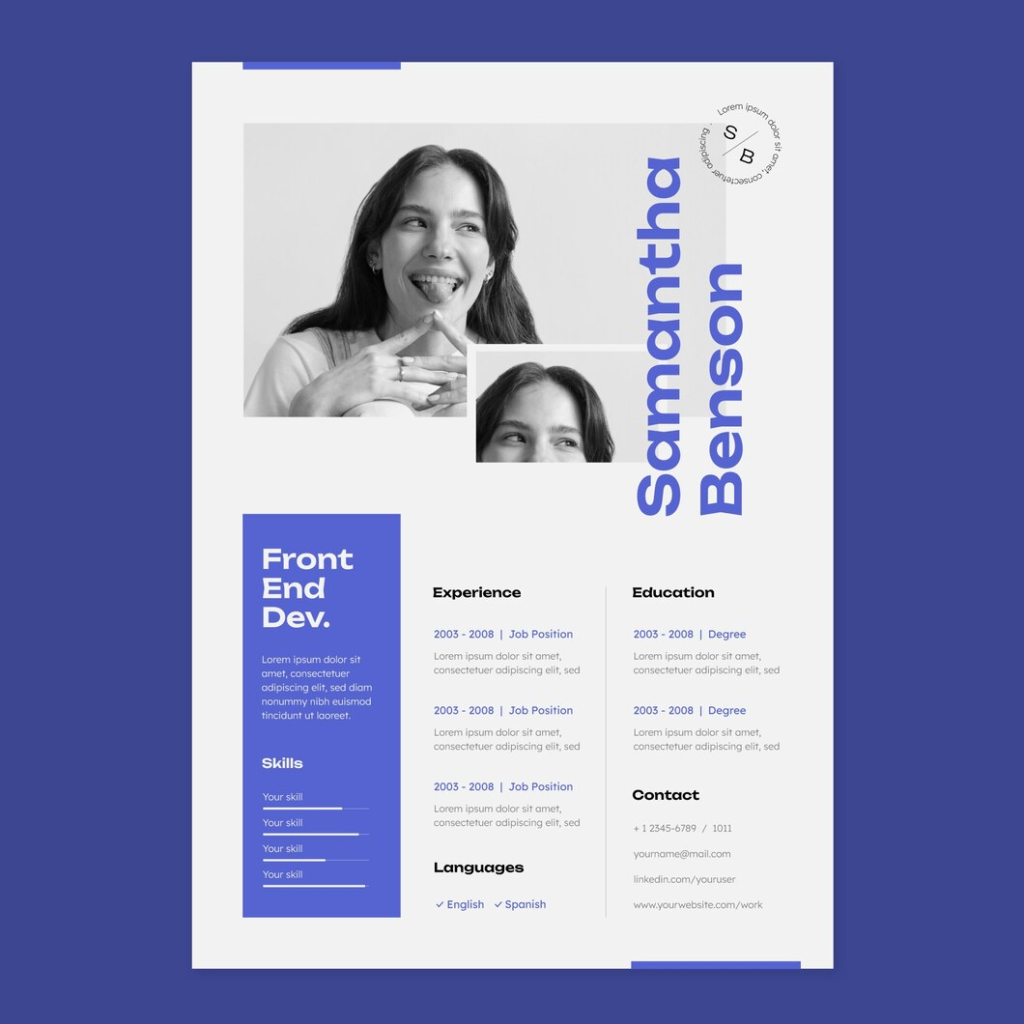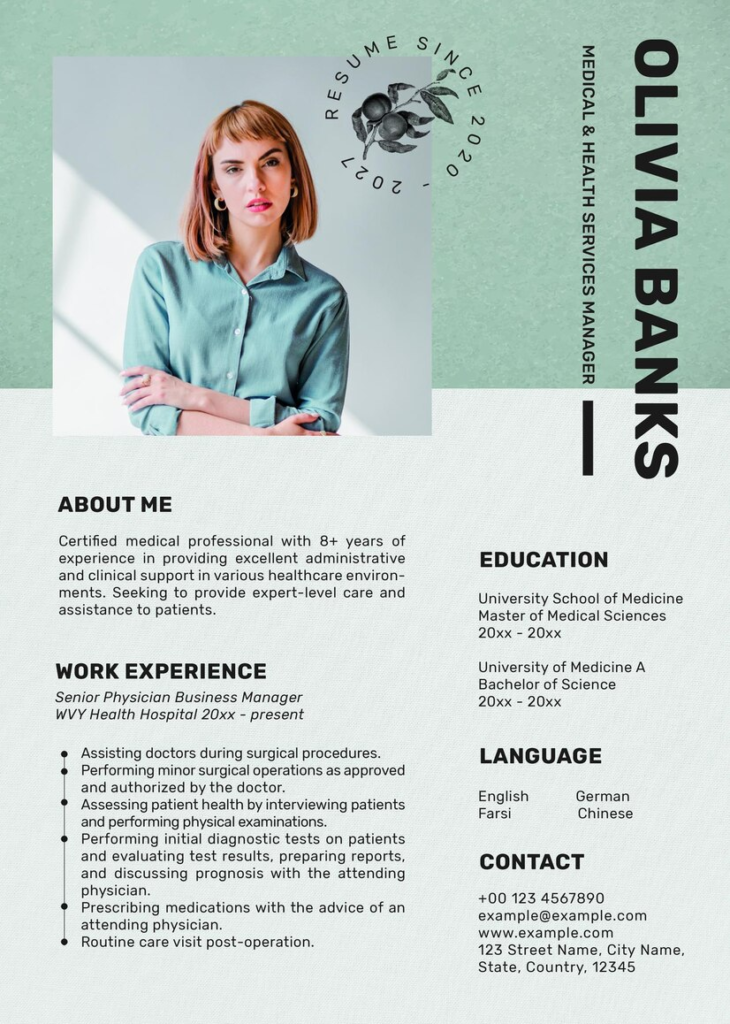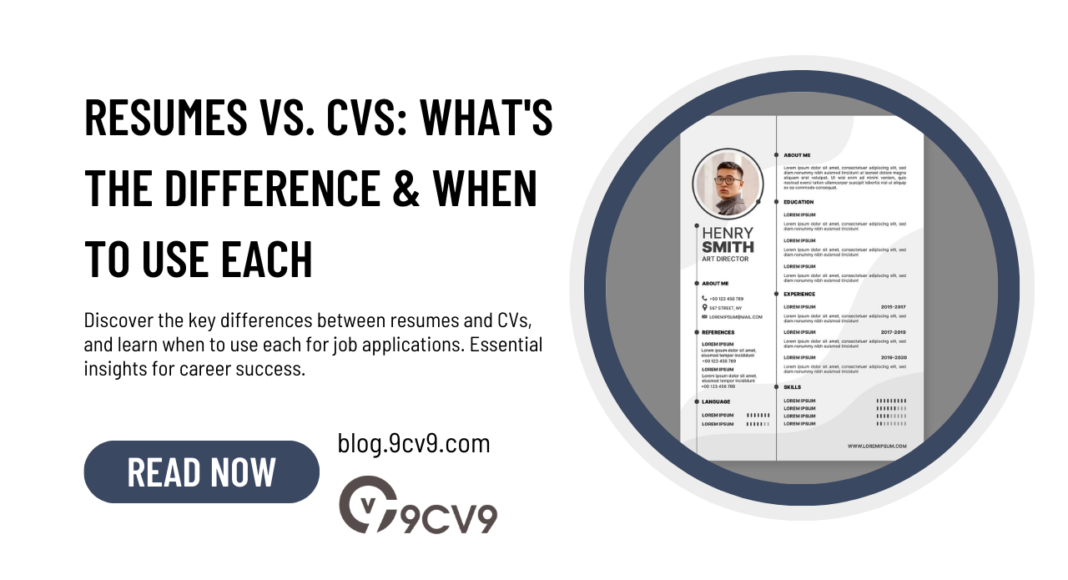Key Takeaways
- Understand the distinction: Resumes are concise, tailored documents suited for job applications in the US and Canada, while CVs provide comprehensive overviews, ideal for academic and international positions.
- Tailor to context: Choose between resumes and CVs based on industry norms, job requirements, and geographic location to effectively showcase your qualifications.
- Optimize for success: Craft your application materials strategically to highlight relevant skills and experiences, ensuring alignment with the expectations of potential employers or academic institutions.
In today’s competitive job market, the significance of presenting oneself effectively cannot be overstated.
As job seekers, we often find ourselves grappling with the intricacies of crafting the perfect application document to showcase our qualifications, experiences, and skills.
Two primary documents frequently come into play in this process: resumes and curriculum vitae (CVs).
While these terms are often used interchangeably, they represent distinct documents with unique purposes, formats, and conventions.
Understanding the nuances between resumes and CVs is crucial for anyone navigating the job application process, whether you’re a recent graduate, a seasoned professional, or someone contemplating a career change.
In this comprehensive guide, we’ll delve deep into the world of resumes and CVs, unraveling their differences, exploring their respective merits, and providing invaluable insights into when to use each document effectively.
So, let’s embark on this journey of discovery, where we’ll navigate through the intricacies of resumes and CVs, shedding light on their distinct features, best practices, and optimal usage scenarios.
Whether you’re a job seeker aiming to land your dream role or an employer seeking clarity on application materials, this guide aims to equip you with the knowledge and understanding necessary to make informed decisions and stand out in today’s competitive job market.
Join us as we unravel the mysteries of resumes and CVs, empowering you to craft compelling application documents tailored to your unique career aspirations and goals.
Whether you’re striving for success in the corporate world, academia, or any other industry, mastering the art of resume and CV creation is a fundamental step towards achieving your professional objectives.
So, without further ado, let’s embark on this enlightening journey into the realm of resumes vs. CVs, where clarity and insight await those eager to seize their career opportunities with confidence and competence.
Before we venture further into this article, we like to share who we are and what we do.
About 9cv9
9cv9 is a business tech startup based in Singapore and Asia, with a strong presence all over the world.
With over eight years of startup and business experience, and being highly involved in connecting with thousands of companies and startups, the 9cv9 team has listed some important learning points in this overview of What’s the Difference between Resumes vs. CVs & When to Use Each.
If your company needs recruitment and headhunting services to hire top-quality employees, you can use 9cv9 headhunting and recruitment services to hire top talents and candidates. Find out more here, or send over an email to [email protected].
Or just post 1 free job posting here at 9cv9 Hiring Portal in under 10 minutes.
Resumes vs. CVs: What’s the Difference & When to Use Each
- Understanding Resumes
- Understanding CVs (Curriculum Vitae)
- Differences Between Resumes and CVs
- When to Use a Resume
- When to Use a CV
- Best Practices for Creating Resumes and CVs
1. Understanding Resumes
In today’s job market, resumes serve as the cornerstone of any job application.
They provide a snapshot of an individual’s professional background, skills, and qualifications, tailored to match the requirements of a specific job role.
Understanding the intricacies of resumes is essential for crafting a compelling document that captures the attention of potential employers.

Definition and Purpose
- A resume is a concise summary of an individual’s work experience, education, skills, and accomplishments.
- Its primary purpose is to highlight relevant qualifications and achievements, showcasing why the candidate is a suitable fit for a particular job role.
Key Components of a Resume
- Contact Information:
- Include your full name, phone number, email address, and professional social media profiles (e.g., LinkedIn).
- Example: John Smith Phone: (555) 123-4567 Email: [email protected] LinkedIn: linkedin.com/in/johnsmith
- Summary or Objective Statement:
- A brief overview of your career goals, skills, and qualifications.
- Tailor this section to align with the job you’re applying for.
- Example: Experienced marketing professional with a proven track record of driving brand awareness and increasing sales through innovative marketing strategies. Seeking opportunities to leverage my expertise in a dynamic marketing team.
- Work Experience:
- List your previous positions in reverse chronological order.
- Include job titles, company names, locations, and dates of employment.
- Use bullet points to highlight key responsibilities and achievements.
- Quantify achievements whenever possible (e.g., increased sales by 20%, managed a team of 10 employees).
- Example:
- Marketing Manager, XYZ Company, New York, NY (January 2018 – Present)
- Led a team of marketing professionals to develop and execute comprehensive marketing campaigns, resulting in a 30% increase in website traffic.
- Implemented social media strategies that grew the company’s following by 50% within six months.
- Marketing Manager, XYZ Company, New York, NY (January 2018 – Present)
- Education:
- Include your highest level of education, degrees, and relevant certifications.
- Provide the name of the institution, degree/certification earned, and graduation date (or expected graduation date).
- Example: Bachelor of Science in Computer Science, University of ABC, Graduated May 2020
- Skills:
- List relevant skills that align with the job requirements.
- Include both hard skills (e.g., proficiency in programming languages) and soft skills (e.g., communication, teamwork).
- Example: Proficient in Microsoft Office Suite, Google Analytics, SEO optimization, strong written and verbal communication skills.
Typical Length and Format
- Resumes are typically one to two pages in length, depending on the individual’s level of experience and the industry norms.
- Use a clean and professional format with clear headings, bullet points, and plenty of white space for readability.
- Avoid using overly decorative fonts or graphics that may distract from the content.
By understanding the components and best practices of resume writing, individuals can create tailored and impactful documents that effectively showcase their qualifications and experiences to potential employers.
2. Understanding CVs (Curriculum Vitae)
A Curriculum Vitae (CV) is a comprehensive document that provides an in-depth overview of an individual’s academic background, professional experiences, skills, achievements, and qualifications.
Unlike resumes, which are typically tailored to specific job applications, CVs are more extensive and are commonly used in academia, research, and international job markets.

Understanding the structure and purpose of CVs is essential for individuals seeking positions that require detailed documentation of their professional and academic history.
Definition and Purpose
- A CV is a detailed account of an individual’s educational and professional history, typically spanning multiple pages.
- Its primary purpose is to provide a comprehensive overview of the candidate’s qualifications, achievements, and experiences, particularly in academic and research settings.
Key Components of a CV
- Personal Information:
- Include your full name, contact information, and professional affiliations.
- Optionally, include a brief personal statement highlighting career objectives and motivations.
- Example:
- Name: Dr. Emily Johnson
- Address: 123 Main Street, Anytown, USA
- Phone: (555) 123-4567
- Email: [email protected]
- Educational Background:
- List your academic qualifications in reverse chronological order.
- Include the institution’s name, degree earned, field of study, and graduation date (or expected graduation date).
- Example:
- Ph.D. in Economics, University of XYZ, Graduated May 2019
- Master of Business Administration (MBA), Harvard Business School, Graduated May 2015
- Professional Experience:
- Detail your work history, emphasizing positions relevant to your field of expertise.
- Include job titles, employers’ names, locations, and dates of employment.
- Provide a brief description of your responsibilities and accomplishments in each role.
- Example:
- Research Analyst, Economic Policy Institute, Washington, D.C. (June 2019 – Present)
- Conduct quantitative and qualitative research on economic trends and policy issues.
- Prepare reports and policy briefs for dissemination to policymakers and the public.
- Research Analyst, Economic Policy Institute, Washington, D.C. (June 2019 – Present)
- Publications:
- List any research papers, articles, books, or other publications authored or co-authored by you.
- Include publication titles, publication dates, and relevant bibliographic information.
- Example:
- Johnson, E., & Smith, J. (2020). “The Impact of Fiscal Policy on Economic Growth.” Journal of Economic Studies, 45(3), 301-315.
- Awards and Honors:
- Highlight any academic or professional awards, scholarships, fellowships, or honors received.
- Provide details of the awarding organization, award name, and date of receipt.
- Example:
- Outstanding Researcher Award, University of XYZ, 2018
- Research Projects:
- Detail any research projects you have undertaken, including project titles, descriptions, and outcomes.
- Include information on your role in the project and any collaborators involved.
- Example:
- Project Title: “Economic Impact of Climate Change Policies”
- Conducted statistical analysis to assess the economic implications of various climate change mitigation strategies.
- Presented findings at international conferences and published research in peer-reviewed journals.
- Project Title: “Economic Impact of Climate Change Policies”
Typical Length and Format
- CVs are typically more extensive than resumes and can span multiple pages, depending on the individual’s academic and professional experiences.
- Use a clear and organized format, with distinct sections and headings for easy navigation.
- Include relevant keywords and phrases related to your field of expertise to enhance searchability and optimize your CV for electronic databases and applicant tracking systems (ATS).
By understanding the structure and components of CVs, individuals can create comprehensive and impactful documents that effectively showcase their academic achievements, professional experiences, and research contributions to potential employers and academic institutions.
3. Differences Between Resumes and CVs
Resumes and CVs serve distinct purposes in the job application process, each tailored to different industries, regions, and career stages.
Understanding the differences between resumes and CVs is essential for job seekers to effectively communicate their qualifications and experiences to potential employers.
Length and Detail
- Resumes:
- Resumes are typically concise and focused, usually spanning one to two pages.
- They prioritize brevity, emphasizing relevant skills, experiences, and accomplishments tailored to the specific job application.
- Example: A marketing professional applying for a mid-level marketing coordinator position may highlight key achievements in previous marketing roles, focusing on relevant skills such as digital marketing, campaign management, and market analysis.
- CVs:
- CVs are more extensive and detailed than resumes, often spanning multiple pages.
- They provide a comprehensive overview of an individual’s academic and professional history, including education, research experience, publications, and presentations.
- Example: An academic researcher applying for a faculty position may include detailed information about their research projects, publications, conference presentations, teaching experience, and grants received.

Focus and Objective
- Resumes:
- Resumes are tailored to specific job applications, highlighting relevant skills and experiences that align with the requirements of the position.
- They aim to demonstrate how the candidate’s qualifications make them a strong fit for the role and the organization.
- Example: A software engineer applying for a position at a tech startup may customize their resume to emphasize their experience with relevant programming languages, software development methodologies, and project management skills.
- CVs:
- CVs provide a comprehensive overview of an individual’s entire academic and professional history, emphasizing qualifications, achievements, and contributions over the course of their career.
- They are often used in academic, research, and scientific fields to showcase a candidate’s scholarly achievements and expertise.
- Example: A medical researcher applying for a faculty position at a university medical school may use their CV to highlight their extensive research experience, publications in peer-reviewed journals, presentations at academic conferences, and grant funding received for research projects.
Usage Across Regions
- Resumes:
- Resumes are commonly used in the United States, Canada, and some other English-speaking countries, as well as in industries such as business, finance, and technology.
- They follow a standardized format and are often required for job applications in corporate settings.
- Example: A marketing professional in the United States would typically submit a resume when applying for marketing positions in industries such as advertising, public relations, or digital marketing.
- CVs:
- CVs are more prevalent in European countries, Australia, New Zealand, and some other regions outside North America.
- They are commonly used in academic, research, and scientific fields, as well as for international job applications.
- Example: An academic researcher in the United Kingdom would typically submit a CV when applying for faculty positions at universities or research institutions, as well as for grant applications and academic fellowships.
Understanding the differences between resumes and CVs enables job seekers to tailor their application materials effectively, showcasing their qualifications and experiences in a format appropriate for their industry, region, and career objectives.
Whether preparing a concise resume for a corporate job application or a comprehensive CV for an academic position, the key is to highlight relevant achievements and skills that demonstrate suitability for the desired role.
4. When to Use a Resume
Resumes are versatile documents that are well-suited for a variety of job applications, particularly in industries where concise and targeted information is valued.
Understanding when to use a resume can help job seekers effectively communicate their qualifications and experiences to potential employers.
Job Applications in the United States and Canada
- Resumes are the standard document used for job applications in the United States and Canada.
- They are preferred by employers in these countries for their concise format and emphasis on relevant skills and experiences.
- Example: A recent college graduate applying for entry-level positions in marketing, finance, or engineering in the United States would typically submit a resume highlighting their relevant coursework, internships, and extracurricular activities.
Industry Preferences
- Resumes are commonly used in industries such as business, finance, technology, and healthcare.
- Employers in these industries value resumes for their ability to quickly convey relevant qualifications and experiences.
- Example: A software developer applying for positions at tech startups or software companies would typically submit a resume highlighting their programming languages, software development methodologies, and project experience.
Entry to Mid-Level Positions
- Resumes are particularly well-suited for entry to mid-level positions where concise and targeted information is essential.
- They allow candidates to highlight specific skills and experiences relevant to the job requirements.
- Example: A marketing professional with a few years of experience in the industry would use a resume to apply for mid-level marketing coordinator or marketing specialist positions, emphasizing their campaign management, digital marketing, and analytics skills.
Tailoring to Specific Job Requirements
- Resumes can be easily tailored to match the specific requirements of a job posting.
- Candidates can customize their resumes to highlight relevant skills and experiences that align with the job description.
- Example: A sales associate applying for a position at a retail store can tailor their resume to emphasize their customer service skills, sales experience, and product knowledge, showcasing their suitability for the role.
When applying for jobs in the United States and Canada, particularly in industries such as business, finance, technology, and healthcare, using a resume is the standard practice.
Resumes are well-suited for entry to mid-level positions where concise and targeted information is valued, allowing candidates to effectively communicate their qualifications and experiences to potential employers.
By tailoring their resumes to match the specific requirements of a job posting, candidates can increase their chances of standing out and securing interviews for their desired positions.
5. When to Use a CV
Curriculum Vitae (CV) is the preferred document for certain industries, academic positions, and international job applications where a comprehensive overview of an individual’s academic and professional history is required.
Understanding when to use a CV is essential for job seekers to effectively showcase their qualifications and experiences.
Academic and Research Positions
- CVs are commonly used for academic and research positions in universities, colleges, and research institutions.
- They provide a detailed account of an individual’s academic achievements, research experience, publications, and presentations.
- Example: A Ph.D. candidate applying for a tenure-track faculty position in a university’s biology department would submit a CV highlighting their research projects, publications in peer-reviewed journals, teaching experience, and academic awards.

International Job Applications
- CVs are often required for international job applications, particularly in European countries, Australia, New Zealand, and some other regions outside North America.
- They are preferred for their comprehensive format, which allows candidates to provide a detailed overview of their qualifications and experiences.
- Example: An engineer from the United States applying for a position at a multinational company in Germany would submit a CV tailored to the German job market, highlighting their technical skills, project experience, and language proficiency.
Positions in Scientific and Technical Fields
- CVs are preferred for positions in scientific, technical, and specialized fields where a detailed account of qualifications and experiences is necessary.
- They allow candidates to showcase their expertise, research contributions, and technical skills in a comprehensive manner.
- Example: A clinical researcher applying for a position at a pharmaceutical company would use a CV to highlight their experience conducting clinical trials, analyzing data, and publishing research findings in medical journals.
Grant Applications and Academic Fellowships
- CVs are often required for grant applications, academic fellowships, and research funding opportunities.
- They provide reviewers with a comprehensive overview of the applicant’s academic background, research experience, and publications.
- Example: A postdoctoral researcher applying for a research grant from a government agency or private foundation would submit a CV detailing their academic qualifications, research interests, and previous grant funding received.
When applying for academic and research positions, international job opportunities, positions in scientific and technical fields, and grant applications, using a CV is the preferred practice.
CVs allow candidates to provide a comprehensive overview of their academic and professional history, highlighting their qualifications, experiences, and contributions relevant to the desired position or opportunity.
By tailoring their CVs to match the requirements of the position or opportunity, candidates can increase their chances of success in their academic and professional endeavors.
6. Best Practices for Creating Resumes and CVs
Crafting a compelling resume or curriculum vitae (CV) requires careful attention to detail and adherence to best practices to effectively showcase your qualifications and experiences.
By following these best practices, job seekers can create polished and professional documents that stand out to potential employers and academic institutions.
Tailoring Content to Specific Job Requirements
- Customize your resume or CV for each job application to highlight relevant skills and experiences.
- Review the job description carefully to identify key requirements and qualifications sought by the employer.
- Tailor your resume or CV to align with the specific job requirements, emphasizing relevant skills, experiences, and achievements.
- Example: If the job posting emphasizes project management skills, highlight relevant project management experience and accomplishments in your resume or CV.
Formatting Tips and Guidelines
- Use a clean and professional format with clear headings and consistent formatting throughout.
- Choose a legible font and font size (e.g., Arial, Calibri, Times New Roman, 10-12 points).
- Organize information into distinct sections, such as contact information, summary/objective, work experience, education, skills, and additional sections as needed.
- Use bullet points to list accomplishments and responsibilities for easy readability.
- Example: Use bold or italic font to highlight section headings and job titles in your resume or CV, making it easier for recruiters to navigate the document.
Highlighting Achievements and Impact
- Quantify achievements and highlight the impact of your contributions in previous roles.
- Use specific metrics, percentages, and numbers to quantify achievements wherever possible (e.g., increased sales by 20%, managed a team of 10 employees).
- Focus on outcomes and results to demonstrate your effectiveness and value to potential employers.
- Example: Instead of simply stating “Managed social media accounts,” quantify the impact by saying “Increased social media engagement by 50% through targeted content and strategic campaigns.”
Proofreading and Editing for Accuracy
- Thoroughly proofread and edit your resume or CV to ensure accuracy and professionalism.
- Check for spelling, grammar, and punctuation errors, as well as formatting consistency.
- Have someone else review your document to catch any mistakes or inconsistencies you may have missed.
- Example: Use spell-checking tools and grammar-checking software to identify and correct errors in your resume or CV before submitting it to employers or academic institutions.
Incorporating Keywords for SEO Optimization
- Incorporate relevant keywords and phrases related to your industry, skills, and qualifications to optimize your resume or CV for search engines and applicant tracking systems (ATS).
- Use industry-specific terminology and buzzwords that align with the job you’re applying for.
- Strategically place keywords throughout your resume or CV, including in the summary/objective, skills section, and job descriptions.
- Example: If you’re applying for a marketing position, include keywords such as “digital marketing,” “SEO optimization,” and “content creation” to increase the visibility of your resume or CV to recruiters searching for candidates with those skills.
By following these best practices for creating resumes and CVs, job seekers can effectively showcase their qualifications and experiences in a polished and professional manner.
Tailoring content to specific job requirements, formatting the document for readability, highlighting achievements and impact, proofreading for accuracy, and incorporating relevant keywords for SEO optimization are essential steps to ensure that your resume or CV stands out to potential employers and academic institutions.
How to Use UrbanCV.com to Create the Best Resumes and CVs
UrbanCV.com is a powerful online platform designed to streamline the process of creating professional resumes and CVs.

With its user-friendly interface and robust features, UrbanCV.com empowers job seekers to craft standout documents that effectively showcase their qualifications and experiences.
Here’s a comprehensive guide on how to leverage UrbanCV.com to create the best resumes and CVs:
User-Friendly Interface
- Navigate the intuitive user interface of UrbanCV.com to create your resume or CV effortlessly.
- Access the platform’s features and tools conveniently from any internet-enabled device.
- Enjoy a seamless and user-friendly experience that simplifies the resume or CV creation process.
Pre-designed Templates
- Choose from a variety of pre-designed templates tailored for different industries and career levels.
- Browse through a diverse selection of professionally designed templates to find the one that best suits your preferences and needs.
- Select a template that aligns with your desired aesthetic and formatting preferences for your resume or CV.
Customization Options
- Personalize your resume or CV with customizable sections, fonts, colors, and layouts.
- Customize each section of your resume or CV to highlight your unique qualifications, experiences, and skills.
- Adjust fonts, colors, and layouts to create a visually appealing and professional document that stands out to potential employers or academic institutions.
Dynamic Content Suggestions
- Receive dynamic content suggestions and prompts to help you fill out each section of your resume or CV effectively.
- Benefit from helpful tips and suggestions tailored to each section, guiding you on what information to include and how to present it.
- Ensure completeness and relevance in your resume or CV content with the assistance of dynamic content suggestions.
Import and Export Options
- Import existing resumes or CVs from other platforms or documents, or export your finished document in various formats.
- Seamlessly import your existing resume or CV to UrbanCV.com to edit and enhance it with the platform’s features and tools.
- Export your finished resume or CV in popular formats such as PDF or Word, ensuring compatibility with different application submission requirements.
Collaboration Features
- Collaborate with others by sharing your resume or CV with colleagues, mentors, or career advisors for feedback and review.
- Share your resume or CV securely with others to gather valuable insights and suggestions for improvement.
- Collaborate in real-time to refine your resume or CV and ensure it effectively communicates your qualifications and experiences.
Example:
- Imagine you’re a recent graduate looking to create a standout resume for your first job application. You log in to UrbanCV.com and browse through the available templates, selecting one that aligns with your desired aesthetic and career aspirations. Using the customizable sections and dynamic content suggestions, you fill out each section of your resume with relevant information about your education, internships, skills, and achievements. With the ability to import and export documents, you seamlessly transfer your finished resume to a PDF format and submit it to potential employers with confidence, knowing that you’ve created a professional and impactful document that effectively showcases your qualifications.
UrbanCV.com provides a comprehensive suite of tools and features to simplify the process of creating professional resumes and CVs.
With its user-friendly interface, pre-designed templates, customization options, dynamic content suggestions, import and export capabilities, collaboration features, and more, UrbanCV.com empowers job seekers to craft standout documents that resonate with employers and academic institutions.
By leveraging the capabilities of UrbanCV.com, you can create the best resumes and CVs that effectively showcase your qualifications and experiences, helping you stand out in today’s competitive job market.
Conclusion
Understanding the differences between resumes and CVs is essential for navigating the complexities of the job application process effectively.
Resumes and CVs serve distinct purposes and are tailored to different industries, regions, and career stages.
By grasping the nuances between these two documents, job seekers can strategically choose the appropriate format to showcase their qualifications and experiences in the best possible light.
Resumes are concise documents that prioritize brevity and relevance, making them ideal for job applications in the United States, Canada, and industries such as business, finance, and technology.
They are tailored to specific job requirements, emphasizing relevant skills, experiences, and achievements that align with the position.
On the other hand, CVs provide a comprehensive overview of an individual’s academic and professional history, making them suitable for academic, research, and international job applications.
CVs are commonly used in European countries, Australia, and New Zealand, as well as for positions in scientific, technical, and specialized fields where a detailed account of qualifications and experiences is necessary.
When deciding whether to use a resume or CV, consider factors such as the job requirements, industry norms, and geographic location.
Tailor your application materials to match the expectations of potential employers or academic institutions, highlighting relevant skills, experiences, and achievements that position you as a strong candidate for the role.
In today’s competitive job market, presenting yourself effectively through a well-crafted resume or CV can make all the difference in securing interviews and advancing your career.
By leveraging the insights gained from understanding the differences between resumes and CVs, you can create application materials that resonate with recruiters, hiring managers, and academic evaluators, increasing your chances of success in achieving your professional goals.
In essence, whether you’re crafting a resume for a corporate job application or a CV for an academic position, the key is to tailor your document to showcase your unique qualifications and experiences in a format that aligns with the expectations of your target audience.
With this understanding, you can confidently navigate the job application process and position yourself for success in your career journey.
If your company needs HR, hiring, or corporate services, you can use 9cv9 hiring and recruitment services. Book a consultation slot here, or send over an email to [email protected].
If you find this article useful, why not share it with your hiring manager and C-level suite friends and also leave a nice comment below?
We, at the 9cv9 Research Team, strive to bring the latest and most meaningful data, guides, and statistics to your doorstep.
To get access to top-quality guides, click over to 9cv9 Blog.
People Also Ask
What is the main difference between a resume and a CV?
Resumes are concise summaries of work experience and skills, tailored for specific job applications. CVs provide comprehensive overviews of academic and professional history.
When should I use a resume?
Resumes are best suited for job applications in the United States, Canada, and industries like business, finance, and technology. Use for concise documents tailored to specific job requirements.
When should I use a CV?
CVs are ideal for academic, research, and international job applications, plus scientific, technical, and specialized fields. Use for detailed accounts of qualifications and experiences.
How long should a resume be?
Resumes are typically one to two pages in length, depending on experience and industry norms. Keep it concise and focused on relevant information.
How long should a CV be?
CVs are more extensive and can span multiple pages. No strict length limit exists, but provide a comprehensive overview of academic and professional history.
What information should I include in a resume?
Include contact information, summary/objective, work experience, education, and relevant skills. Tailor content to match job requirements.
What information should I include in a CV?
Include personal information, education, professional experience, publications, awards, research projects, and other relevant achievements.
Can I use a resume instead of a CV?
In some cases, yes. Consider employer or institution expectations and use the appropriate document accordingly.
Can I use a CV instead of a resume?
Depends on job application requirements and industry norms. Adhere to guidelines provided by employers or institutions.
Do I need to tailor my resume for each job application?
Yes, customization significantly improves chances of success. Highlight relevant skills and experiences for each application.
Do I need to tailor my CV for each job application?
While CVs are more comprehensive, tailoring content still benefits applications. Emphasize relevant qualifications and experiences.
How do I format a resume?
Use a clean, professional format with clear headings, bullet points, and ample white space for readability. Avoid overly decorative elements.
How do I format a CV?
Organize into distinct sections, maintain consistency, and use clear formatting throughout for readability.
What are the key differences in content between a resume and a CV?
Resumes focus on work experience, skills, and achievements, while CVs provide comprehensive overviews, including academic qualifications and research experience.
Can I include personal interests or hobbies in my resume or CV?
While not necessary, you can include if relevant to the job or demonstrate valuable skills. Prioritize professional information.
How do I ensure my resume or CV gets noticed by employers or academic institutions?
Tailor to match specific requirements of each application. Highlight unique qualifications and experiences.
What is the preferred document for job applications in Europe?
CVs are preferred in many European countries, offering detailed qualifications and experiences.
Can I use a CV for a job application in the United States?
Some employers may request a CV, especially for academia, research, or international positions.
How do I decide whether to use a resume or a CV for a job application?
Consider job requirements, industry norms, geographic location, and preferences of potential employers or academic institutions.
Are there any online tools or resources available to help me create a resume or CV?
Yes, numerous platforms offer assistance, such as UrbanCV.com, resume builders, and templates, streamlining the process for professional-looking documents.































![Writing A Good CV [6 Tips To Improve Your CV] 6 Tips To Improve Your CV](https://blog.9cv9.com/wp-content/uploads/2020/06/2020-06-02-2-100x70.png)


